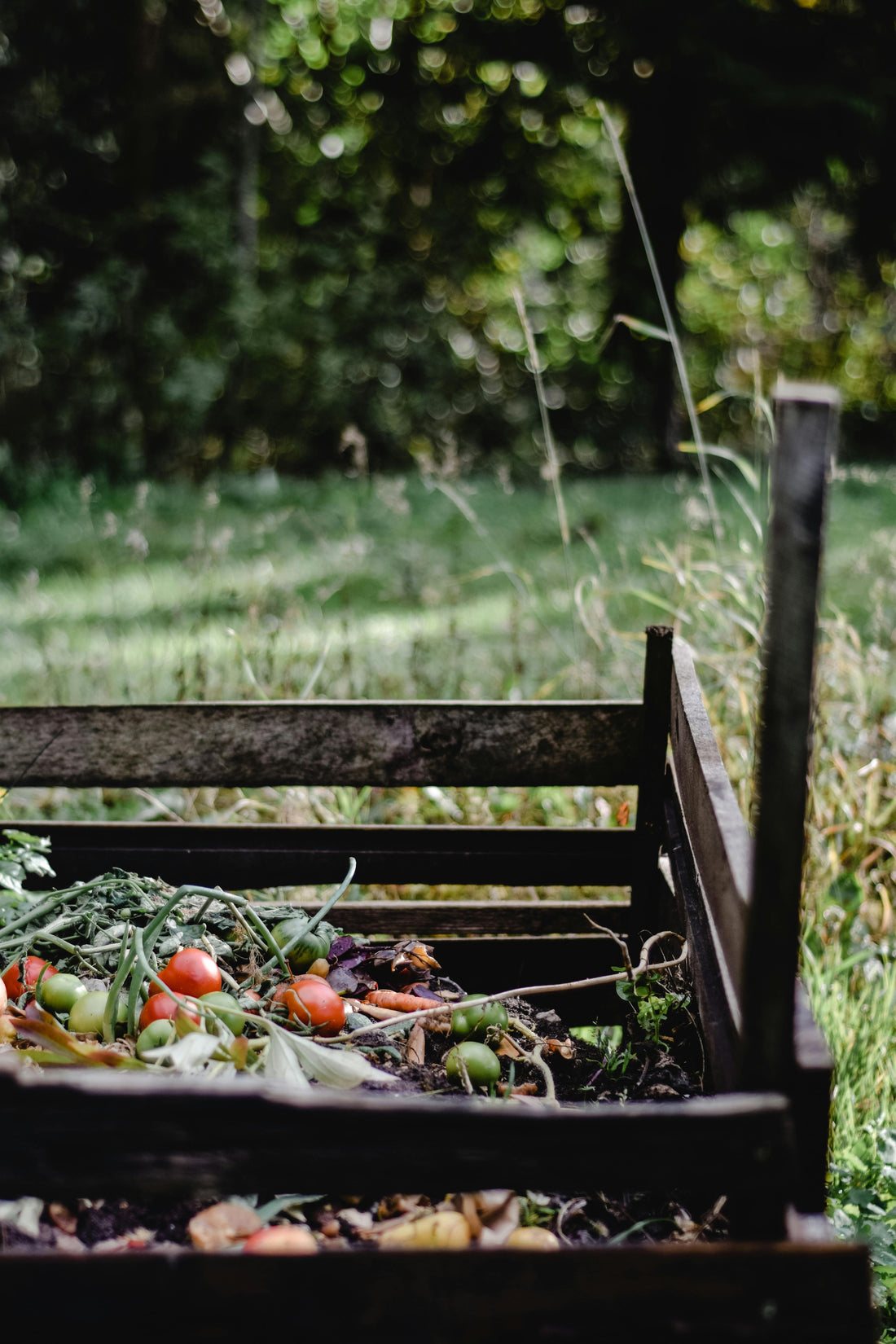
Preparing Your Garden for the Winter Months: A Homesteader’s Guide
As the vibrant colors of fall begin to fade and the crispness of winter starts to settle in, your garden may look like it’s ready for a long nap. But before you hang up your gloves for the season, there’s still plenty to do to prepare your garden for the colder months ahead. Whether you’re working a sprawling homestead or tending a small backyard plot, the effort you put in now will make all the difference come springtime.
Here are our favorite tips for getting your garden prepped for winter — plus a few cold-hardy vegetables you can still plant in October in USDA Zones 6–8.
1. Clean Up and Clear Out
Start by removing any dead plants, spent annuals, and lingering weeds. Not only does this make your garden look tidy, but it also helps prevent disease and pests from overwintering in your beds.
-
Pull and compost healthy plant debris, but discard anything diseased.
-
Clean out containers and raised beds — leftover roots and debris can harbor insects and fungi.
-
Rake fallen leaves from planting areas and use them elsewhere (more on that next!).
A clean slate now means fewer headaches later when you’re ready to replant.
2. Add Organic Matter and Compost
Fall is the perfect time to feed your soil. As you remove old plants, loosen the soil with a garden fork and work in compost, aged manure, or leaf mold. This enriches the soil, improves drainage, and helps beneficial microbes thrive during the off-season.
If you have a compost pile going, turn it one last time before winter and keep adding organic matter such as:
-
Vegetable peelings
-
Coffee grounds
-
Dried leaves
-
Straw bedding from your livestock
Tip from the homestead: If your compost pile tends to dry out in colder weather, give it a light watering and cover it with a tarp or straw to retain heat and moisture.
3. Protect Your Perennials
Perennial herbs and flowers benefit from a bit of TLC before frost hits.
-
Cut back dead stems to just above the ground.
-
Mulch around the base with straw, shredded leaves, or wood chips to insulate the roots.
-
Divide crowded clumps of plants like rhubarb, hostas, or daylilies so they’ll come back stronger next year.
For herbs like thyme, oregano, and chives, you can pot up a few small clumps and bring them indoors to enjoy all winter long.
4. Mulch, Mulch, and More Mulch
Mulching is one of the most important winter prep steps. A thick layer (2–4 inches) of straw, shredded leaves, or wood chips will:
-
Keep soil temperatures stable
-
Prevent erosion from winter rains
-
Suppress weeds
-
Add organic matter as it breaks down
For raised beds, mulch acts like a blanket, keeping the microbial life in the soil active even when the air above is chilly.

5. Plant a Cover Crop
If you’re not planting fall vegetables, sow a cover crop to protect and enrich your soil over winter. Good options for Zones 6–8 include:
-
Crimson clover (fixes nitrogen and adds beauty with spring blooms)
-
Winter rye (great for erosion control and weed suppression)
-
Hairy vetch (excellent nitrogen fixer for spring till-in)
Cover crops help prevent nutrients from washing away and keep your soil structure intact. In spring, you can turn them under as “green manure” to boost fertility.
6. Extend the Season with Row Covers or Cold Frames
Just because frost is coming doesn’t mean your harvest has to end!
Simple season-extension tools like row covers, hoop houses, or cold frames can protect tender greens and root crops well into winter.
-
Row covers: Lightweight fabric that lets in sunlight while trapping heat.
-
Cold frames: Mini-greenhouses made from reclaimed windows or clear plastic lids that shelter crops from freezing temps.
Homesteaders in Zones 6–8 often find they can harvest fresh greens right through December with just a bit of protection.
7. Late-Fall and Winter Vegetables for Zones 6–8
If your soil isn’t frozen and daytime temps are still above 40°F, you can tuck a few cold-hardy crops into the ground in October. Many of these will overwinter and bounce back in early spring!
Root Vegetables
-
Garlic: October is prime time to plant cloves 2 inches deep and 4 inches apart. They’ll root before the freeze and sprout in spring.
-
Onions (sets or seedlings): Choose overwintering varieties like ‘Walla Walla’ or ‘Candy.’
-
Carrots & Parsnips: Sow in well-drained beds and mulch heavily. They’ll sweeten as the temperature drops.
Leafy Greens
-
Spinach: One of the toughest greens around — plant in early to mid-October for a winter or very early spring harvest.
-
Kale: Cold makes it sweeter. Varieties like ‘Winterbor’ and ‘Red Russian’ are excellent for overwintering.
-
Mâche (Corn Salad) and Claytonia: Old-fashioned winter greens that thrive in cold frames or under mulch.
Brassicas
-
Cabbage, Broccoli, and Cauliflower: Start from transplants if you can find them locally; otherwise, focus on hardy Asian greens like tatsoi and mizuna.
-
Collard Greens: The Southern favorite that laughs at frost.
Even in chilly months, these crops keep your garden productive and your pantry full of fresh, nutrient-dense food.

8. Drain and Store Garden Equipment
Frozen water can wreak havoc on hoses, watering cans, and irrigation systems.
-
Disconnect and drain hoses completely before storing them in a shed or garage.
-
Empty drip lines and rain barrels to prevent cracking.
-
Clean and oil tools to prevent rust.
A simple coat of linseed oil on wooden handles will extend their life — a small homestead habit that saves money year after year.
9. Plan for Next Season
Winter is the perfect time for reflection and planning.
-
Take notes on what thrived and what didn’t this year.
-
Sketch next year’s garden layout to rotate crops and prevent soil depletion.
-
Browse seed catalogs (preferably by the fire with a mug of cocoa).
Consider adding new perennials, fruit trees, or pollinator patches to expand your homestead’s productivity next year.
10. Don’t Forget the Wildlife
Your garden is part of a larger ecosystem. Leave a few seed heads, berries, or brush piles to help birds and beneficial insects survive winter.
-
Hang suet feeders or birdhouses near the garden.
-
Provide a shallow water dish on mild days.
-
Avoid heavy pruning on shrubs that provide shelter or berries.
A thriving garden supports not just your family, but the entire local ecosystem.
Bringing It All Together
Preparing your garden for winter is about more than just cleanup — it’s about building resilience in your soil, your plants, and your homestead as a whole. By taking these steps now, you’ll ensure that when spring arrives, your garden is healthy, balanced, and ready to burst into life again.
Even as the frost settles and the days shorten, your homestead continues its quiet rhythm — compost breaking down, garlic rooting deep, kale leaves standing tall under a light dusting of snow. There’s a unique beauty in this season of rest and renewal.
So, pull on your gloves, grab that rake, and give your garden the care it deserves before the first snow falls. Come spring, you’ll be glad you did.
#krisandlarry #farmhouse #homestead #gardeningtips #fallgardenprep #wintergarden #organicgardening #homesteadlife #growyourownfood #gardenzones6to8 #gardeningforbeginners #sustainableliving #selfsufficiency #preppergarden #backyardgarden #winterveggies #coldhardycrops #soilhealth #composting #seasonextension #gardeningcommunity #growwithpurpose
